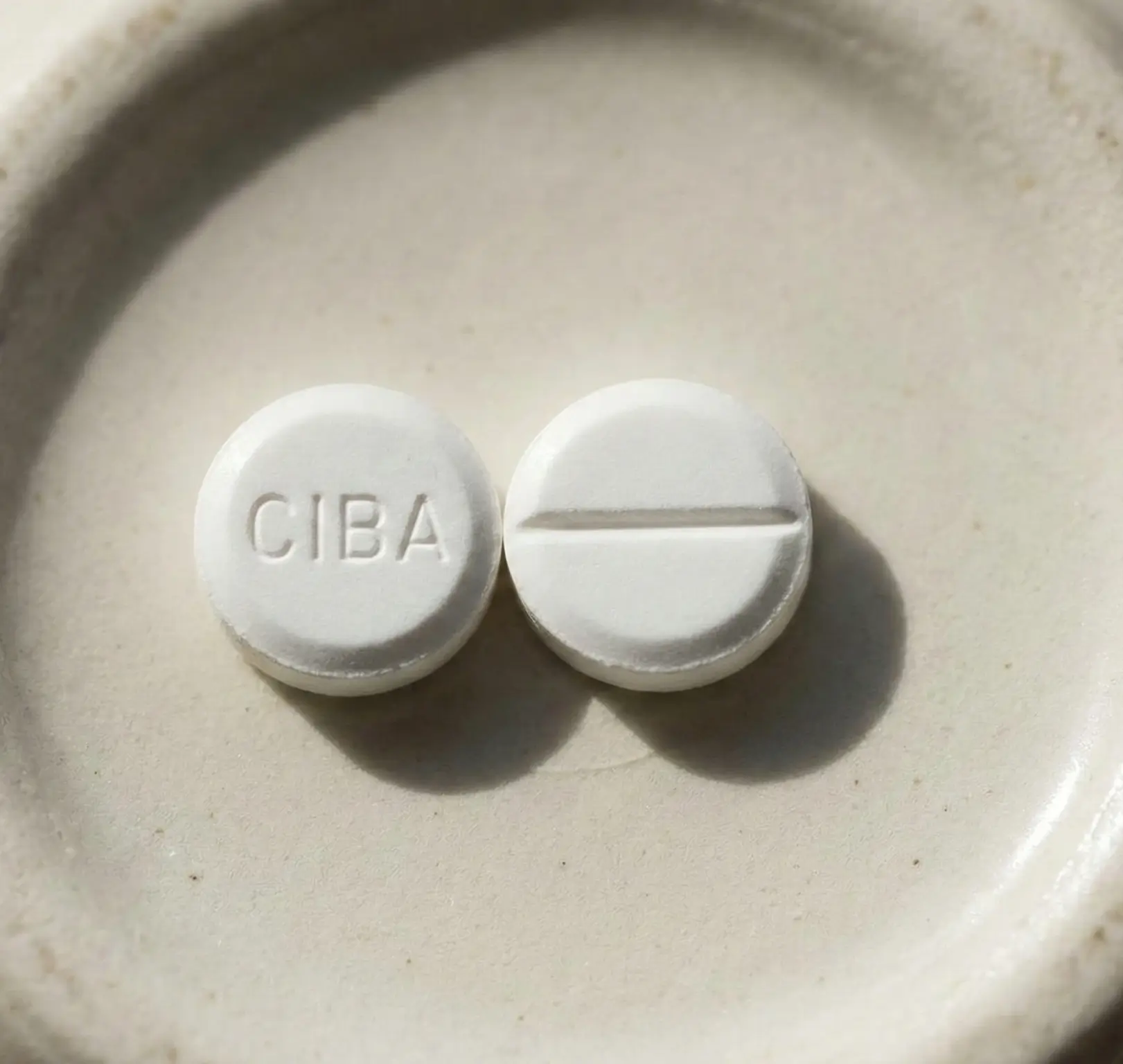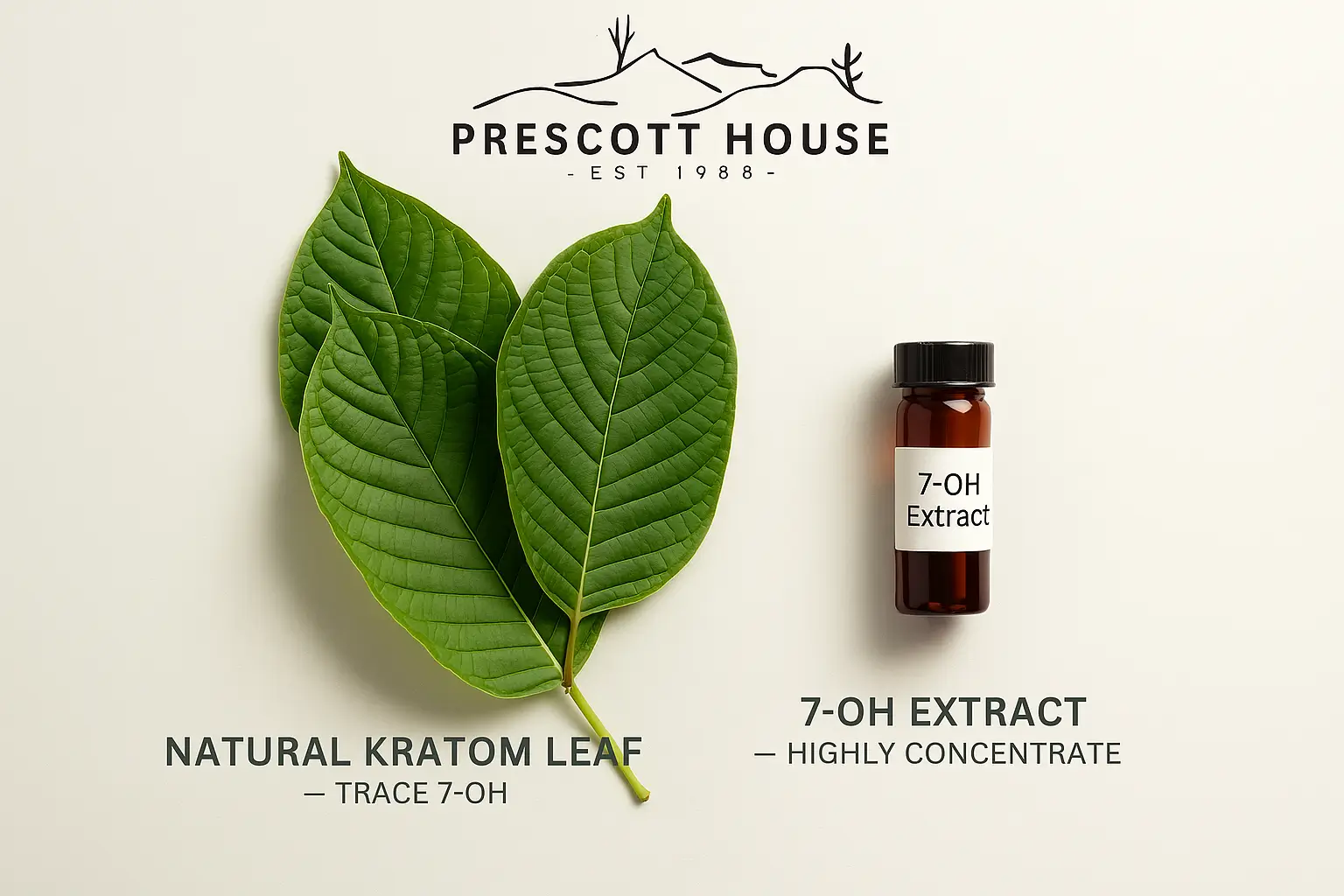Understanding Anxiety and Addiction
Anxiety disorders and addiction are two complex conditions that often co-occur, leading to significant challenges for individuals who experience them. Understanding the prevalence of anxiety disorders and the link between anxiety and substance use disorders is crucial for addressing these interconnected issues.

The Prevalence of Anxiety Disorders
Anxiety disorders are the most common mental health condition in the United States, affecting approximately 40 million adults aged 18 and older, which accounts for 18.1% of the population each year. These disorders encompass a range of conditions, including generalized anxiety disorder, panic disorder, social anxiety disorder, and specific phobias.
The Link between Anxiety and Substance Use Disorders
Individuals with anxiety disorders are alarmingly 2 to 3 times more likely to suffer from substance use disorders compared to the general population. The relationship between anxiety and substance use disorders is multifaceted. Some individuals may turn to substances like alcohol or drugs to self-medicate their anxiety symptoms, leading to a co-occurrence of anxiety and substance use disorders. On the other hand, substance abuse can worsen anxiety symptoms and interfere with the effectiveness of anxiety treatment.
The prevalence rates for anxiety disorders and substance use disorders in the United States are 28.8% and 14.6%, respectively. It is estimated that up to 20% of Americans with an anxiety or mood disorder also battle a substance abuse disorder. Additionally, the likelihood of having an anxiety disorder and a substance abuse disorder is found to be higher among women compared to men.
Addressing co-occurring anxiety and addiction requires integrated treatment approaches that simultaneously target both conditions. Dual diagnosis treatment programs provide comprehensive care for individuals struggling with these co-occurring disorders [1]. These programs may include therapy options such as cognitive-behavioral therapy and dialectical behavior therapy, along with medication management to address both anxiety and addiction effectively.
Understanding the prevalence of anxiety disorders and the complex relationship between anxiety and substance use disorders is essential for developing effective treatment strategies and providing support to individuals facing these interconnected challenges.
Factors Contributing to Co-Occurring Anxiety and Addiction
The co-occurrence of anxiety and addiction is a complex and interconnected phenomenon. Several factors contribute to the development and maintenance of this dual diagnosis. Understanding these factors is crucial in providing effective treatment for individuals experiencing both anxiety and addiction.
Self-Medication and Substance Misuse
One significant factor contributing to the co-occurrence of anxiety and addiction is self-medication. Individuals with anxiety disorders may turn to substances like alcohol or drugs as a means of coping with their anxiety symptoms. The temporary relief provided by these substances can create a cycle of dependence and misuse, leading to the development of a substance use disorder.
It is important to note that while substances may initially provide a sense of relief, they ultimately exacerbate anxiety symptoms in the long run. Regular substance use can disrupt the brain's natural chemical balance, leading to increased feelings of anxiety and worsening of anxiety disorders. This creates a vicious cycle where individuals continue to misuse substances to alleviate their anxiety, only to experience heightened anxiety as a result.
Impact of Substance Use on Anxiety Symptoms
The relationship between substance use and anxiety is bidirectional. Substance use can impact anxiety symptoms, making them more severe and frequent. Alcohol, for example, is a depressant that can increase feelings of anxiety and contribute to the development of anxiety disorders. Similarly, drugs that stimulate the central nervous system, such as cocaine or amphetamines, can induce anxiety, panic attacks, and generalized anxiety disorder [2].
Furthermore, substance use can interfere with medication or therapy prescribed for anxiety disorders, rendering them less effective. This can make it challenging for individuals to manage their anxiety symptoms, leading to a greater reliance on substances as a means of self-medication.
By understanding the factors contributing to the co-occurrence of anxiety and addiction, healthcare professionals can provide comprehensive and tailored treatment for individuals experiencing this dual diagnosis. Effective treatment often involves addressing both the anxiety disorder and the substance use disorder concurrently, with the goal of promoting recovery and improving overall well-being.
Dual Diagnosis Treatment for Co-Occurring Anxiety and Addiction
When individuals struggle with co-occurring anxiety and addiction issues, it is essential to provide them with comprehensive care that addresses both conditions simultaneously. Dual diagnosis treatment programs have been developed to meet this need, offering integrated approaches to help individuals on their path to recovery.
Comprehensive Care for Dual Diagnosis
Comprehensive care for co-occurring anxiety and addiction involves a multidisciplinary approach that combines medical, psychological, and social interventions. It aims to address the underlying causes and effects of both conditions, providing individuals with the tools and support they need to achieve lasting recovery.
In dual diagnosis treatment, an individual's treatment plan is tailored to their unique needs and circumstances. This may involve a combination of therapies, medication management, lifestyle changes, and support groups. The primary goal is to provide holistic care that addresses the interconnectedness of anxiety and addiction, fostering overall well-being and long-term recovery.
Therapy Options for Co-Occurring Disorders
Therapy plays a crucial role in treating co-occurring anxiety and addiction. Various evidence-based therapies have shown effectiveness in addressing both conditions simultaneously. Some commonly used therapies include:
- Cognitive-Behavioral Therapy (CBT): CBT helps individuals identify and modify negative thought patterns and behaviors. It focuses on developing healthier coping mechanisms and strategies to manage anxiety and addiction triggers.
- Dialectical Behavior Therapy (DBT): DBT combines elements of CBT with mindfulness techniques. It helps individuals regulate their emotions, improve interpersonal skills, and develop effective coping strategies to manage anxiety and addiction.
- Medication-Assisted Therapy (MAT): Medications may be prescribed to help manage anxiety symptoms and support addiction recovery. Medications such as paroxetine (Paxil), sertraline (Zoloft), buspirone (BuSpar), topiramate (Topamax), and tiagabine (Gabitril) have been utilized as part of pharmacotherapy options.
- Integrated Psychotherapeutic Treatments: Integrated treatments that target both anxiety disorders and substance use disorders have shown promising results. These treatments focus on psychoeducation, exploring the relationship between anxiety symptoms and substance use, self-management of symptoms and negative emotions, and the development of cognitive-behavioral coping skills [4].
The choice of therapy options for co-occurring disorders depends on the individual's specific needs, preferences, and the expertise of the treatment team. A comprehensive assessment is typically conducted to determine the most appropriate therapeutic approach.
By providing comprehensive care and utilizing therapy options tailored to co-occurring anxiety and addiction, individuals can receive the support they need to address both conditions simultaneously. Integrated treatment approaches have shown promise in helping individuals achieve recovery and improve their overall well-being.
Adolescent Anxiety, Addiction, and Substance Misuse
During adolescence, the presence of anxiety can significantly increase the risk of developing substance misuse and addiction. Understanding the specific relationships between anxiety and different substances is crucial for effective intervention and support.
Anxiety and Opioid Misuse
High levels of anxiety among adolescents are associated with the misuse of opioids. According to a study by the Substance Abuse and Mental Health Services Administration (SAMHSA), there is a 28% prevalence of opioid misuse among those with high levels of anxiety. Adolescents experiencing anxiety may turn to opioids as a means of self-medication or to alleviate distressing symptoms. This highlights the importance of early identification and intervention to address both anxiety and the potential risk of opioid misuse.
Anxiety and Binge Drinking
Adolescents displaying anxiety symptoms have been found to have significantly higher odds of engaging in binge drinking compared to those without these symptoms. Anxiety can contribute to the use of alcohol as a coping mechanism, providing temporary relief from anxious thoughts and feelings. It is vital to address the underlying anxiety issues to reduce the risk of harmful alcohol consumption among adolescents.
Anxiety and Marijuana Use
Adolescents who experience high levels of anxiety have a significantly higher likelihood of using marijuana compared to those without elevated anxiety levels. Anxiety may motivate individuals to seek temporary relief through the use of substances like marijuana. It is crucial to provide appropriate support and interventions to address anxiety and prevent the potential escalation of marijuana use.
Anxiety and Prescription Drug Misuse
Anxiety symptoms in adolescents have been associated with higher odds of prescription drug misuse. Adolescents may turn to prescription drugs, such as benzodiazepines or stimulants, to alleviate anxiety symptoms or manage stress. This highlights the need for early identification of anxiety symptoms and targeted interventions to prevent the misuse of prescription medications.
Recognizing the relationship between anxiety and substance misuse in adolescence is crucial for implementing effective prevention and intervention strategies. By addressing underlying anxiety issues and providing support for healthier coping mechanisms, we can help reduce the risk of substance misuse and its associated consequences.
Anxiety, Addiction, and College Students
College can be an exciting and transformative time in a young person's life, but it can also be a period of increased stress and anxiety. The combination of newfound independence, academic pressures, social expectations, and other factors can contribute to heightened anxiety levels among college students. This section will explore the rising rates of anxiety in college students and its connection to addiction.
Rising Rates of Anxiety in College Students
In recent years, there has been a significant increase in anxiety among college students. According to a 2018 survey conducted by the American College Health Association, 63% of college students reported feeling overwhelming anxiety, a significant increase from 50% in 2011. This rise in anxiety levels among college students has garnered attention and concern from researchers, educators, and mental health professionals.
Several factors contribute to the rising rates of anxiety in college students. The transition from high school to college can be challenging, as students face new academic demands, a different social environment, and increased responsibilities. The pressure to succeed academically, maintain social connections, and plan for the future can create a sense of overwhelming stress and anxiety.
Moreover, the competitive nature of college admissions can contribute to anxiety among students. Many students feel the need to excel academically, participate in extracurricular activities, and build an impressive resume to secure future opportunities. This pressure to achieve can lead to heightened anxiety levels and a constant fear of failure.
The impact of anxiety on college students' well-being should not be underestimated. Anxiety can interfere with academic performance, social interactions, and overall quality of life. It can also increase the risk of developing harmful coping mechanisms, such as substance misuse and addiction.
Understanding the connection between anxiety and addiction is crucial for effectively addressing the needs of college students. Research has shown that anxiety disorders and substance use disorders co-occur at higher rates than expected by chance alone. Individuals with anxiety disorders are 2 to 3 times more likely to suffer from substance use disorders compared to the general population [1]. This co-occurrence underscores the importance of providing comprehensive care that addresses both anxiety and addiction in college students.
By recognizing the rising rates of anxiety in college students and understanding its link to addiction, educational institutions and mental health professionals can work together to develop strategies for prevention, early intervention, and effective treatment. Creating supportive environments, promoting mental health resources, and fostering open conversations about anxiety can help mitigate the impact of anxiety and reduce the likelihood of substance misuse among college students.
The Relationship Between Anxiety Disorders and Substance Use Disorders
Anxiety disorders and substance use disorders often co-occur at higher rates than would be expected by chance alone, leading to significant interest among researchers and clinicians. In the United States, the prevalence rates for anxiety disorders and substance use disorders are 28.8% and 14.6%, respectively. There is a clear relationship between these two conditions, with specific anxiety disorders showing higher associations with substance use disorders. Generalized anxiety disorder (GAD) and panic disorder (PD) have the highest associations with substance use disorders, while posttraumatic stress disorder (PTSD) and obsessive-compulsive disorder (OCD) are associated with alcohol use disorders but not drug use disorders.
Prevalence of Co-Occurring Disorders
Anxiety disorders and substance use disorders often co-occur, with approximately 17.7% of individuals with a substance use disorder also meeting criteria for an independent anxiety disorder. On the other hand, 15% of those with any anxiety disorder have at least one co-occurring substance use disorder. The relationship between anxiety disorders and drug use disorders tends to be stronger than the relationship between anxiety and alcohol use disorders. In treatment settings, estimates of co-occurring anxiety disorders and substance use disorders vary, with one sample of substance use disorder treatment clinics reporting that 80% of individuals in treatment had at least one co-occurring anxiety disorder. This highlights the need for comprehensive assessment and treatment of both anxiety and substance use disorders in clinical settings.
Impact of Co-Occurring Disorders on Treatment Outcome
Both anxiety disorders and substance use disorders have an impact on the course and treatment outcome of the counterpart condition. Anxiety disorders are associated with increased severity of lifetime alcohol use disorders, higher severity of alcohol withdrawal, higher relapse rates following substance abuse treatment, and increased lifetime service utilization among individuals with a substance use disorder. The presence of a substance use disorder can decrease the recovery rate and increase the likelihood of recurrence of generalized anxiety disorder (GAD). Additionally, it is associated with an elevated risk of suicide in patients with panic disorder (PD). Co-occurring PTSD and substance use disorders are particularly concerning, as they are associated with poorer social functioning, higher rates of suicide attempts and legal problems, increased physical illness, increased risk of violence, and poorer treatment outcomes.
The co-occurrence of anxiety disorders and substance use disorders presents unique challenges in treatment. Integrated psychotherapeutic treatments that target both conditions have shown significant reductions in symptoms. These treatments focus on psychoeducation, exploring the relationship between PTSD symptoms and substance use, self-management of symptoms and negative emotions, and the development of cognitive-behavioral coping skills. Examples of these integrated treatments include ATRIUM, TARGET, TREM, and Transcend. Seeking Safety, a manualized cognitive-behavioral intervention, has also been shown to be effective for women with co-occurring PTSD and substance use disorders [4].
The use of medications in the treatment of co-occurring anxiety disorders and substance use disorders is a complex issue. While medications like benzodiazepines can provide immediate relief of anxiety symptoms, they are generally avoided in substance use disorder populations due to their abuse potential. Further research is needed to determine the efficacy and safety of medication treatment for these co-occurring disorders. Overall, addressing both anxiety and substance use disorders simultaneously is essential for achieving positive treatment outcomes and improving the overall well-being of individuals with co-occurring disorders.
Treating Co-Occurring Anxiety and Substance Use Disorders
When it comes to addressing co-occurring anxiety and substance use disorders, a comprehensive treatment approach is essential. This typically involves a combination of pharmacotherapy and psychotherapy to effectively manage both conditions and promote recovery.
Pharmacotherapy for Dual Diagnosis
Pharmacotherapy, or the use of medications, can play a crucial role in the treatment of co-occurring anxiety and substance use disorders. However, it's important to note that medication options may vary depending on the specific needs and circumstances of each individual. Some commonly used medications for these dual diagnoses include:
- Paroxetine (Paxil)
- Sertraline (Zoloft)
- Buspirone (BuSpar)
- Topiramate (Topamax)
- Tiagabine (Gabitril)
These medications may help alleviate symptoms of anxiety while also addressing substance use disorders. However, it's important to work closely with a healthcare professional to determine the most appropriate medication and dosage for each individual. Additionally, the use of medications should always be accompanied by other forms of treatment, such as psychotherapy, for optimal outcomes.
Psychotherapy Approaches for Dual Diagnosis
Psychotherapy, specifically cognitive-behavioral therapy (CBT), is a widely recognized and effective approach in the treatment of co-occurring anxiety and substance use disorders. CBT helps individuals identify and modify negative thought patterns and behaviors that contribute to anxiety and substance misuse.
In the context of dual diagnosis, CBT can help individuals develop coping skills to manage anxiety and cravings for substances. It also addresses underlying issues and triggers that may contribute to both disorders. By working with a trained therapist, individuals can learn healthier ways to cope with anxiety and develop strategies to prevent relapse.
Integrated psychotherapeutic treatments that target both post-traumatic stress disorder (PTSD) and substance use disorders have also shown promising results. These treatments focus on psychoeducation, exploring the relationship between PTSD symptoms and substance use, and the development of cognitive-behavioral coping skills.
It's important to note that the optimal approach to treating co-occurring anxiety and substance use disorders is still an area of ongoing research. However, the combination of pharmacotherapy and psychotherapy provides a comprehensive treatment approach that addresses both the mental health and substance use components of these dual diagnoses.
By integrating these treatment modalities, individuals with co-occurring anxiety and substance use disorders can receive the necessary support and guidance to effectively manage their conditions and work towards long-term recovery. It's crucial to work with healthcare professionals who specialize in dual diagnosis to ensure personalized and evidence-based care.
Treating Co-Occurring Anxiety and Substance Use Disorders
When it comes to individuals experiencing both anxiety and addiction, it is crucial to provide comprehensive treatment that addresses both conditions simultaneously. This approach, known as dual diagnosis treatment, recognizes the complex relationship between anxiety and substance use disorders and aims to provide effective care for individuals struggling with co-occurring issues.
Pharmacotherapy for Dual Diagnosis
Pharmacotherapy, or the use of medications, is one approach to treating co-occurring anxiety and substance use disorders. Medications can help alleviate anxiety symptoms and manage cravings or withdrawal symptoms associated with substance use disorders. Some commonly used medications for dual diagnosis include:
- Paroxetine (Paxil)
- Sertraline (Zoloft)
- Buspirone (BuSpar)
- Topiramate (Topamax)
- Tiagabine (Gabitril)
It is important to note that medication choices may vary based on individual needs and should be prescribed by a qualified healthcare professional. Medication management, in combination with other forms of treatment, can significantly improve outcomes for individuals with co-occurring anxiety and addiction.
Psychotherapy Approaches for Dual Diagnosis
Psychotherapy, or talk therapy, is another essential component of dual diagnosis treatment. Various therapy options can effectively address both anxiety and substance use disorders. Some commonly used psychotherapy approaches for dual diagnosis include:
- Cognitive-Behavioral Therapy (CBT): CBT helps individuals identify and modify negative thought patterns and behaviors that contribute to anxiety and substance use. It focuses on developing coping strategies and skills to manage anxiety and cravings.
- Dialectical Behavior Therapy (DBT): DBT combines elements of CBT with mindfulness techniques. It helps individuals regulate emotions, improve interpersonal skills, and develop healthy coping mechanisms.
- Group Therapy: Group therapy provides a supportive environment where individuals can share their experiences, learn from others, and gain valuable insights. It offers a sense of community and helps individuals feel less isolated in their struggles.
- Family Therapy: Involving family members in therapy can be beneficial for both the individual with dual diagnosis and their loved ones. Family therapy aims to improve communication, strengthen relationships, and provide support for recovery.
- Motivational Interviewing: This approach focuses on enhancing an individual's motivation and commitment to change. It helps individuals identify their values, set goals, and work towards positive behavioral changes.
The combination of pharmacotherapy and psychotherapy provides a comprehensive treatment approach for individuals with co-occurring anxiety and addiction. However, it's important to note that treatment plans should be tailored to each individual's unique needs and may require ongoing adjustments to ensure optimal outcomes.
By addressing both anxiety and substance use disorders concurrently, dual diagnosis treatment offers individuals a higher chance of successful recovery and long-term wellness. It is crucial to seek professional help from qualified healthcare providers experienced in dual diagnosis to receive the most effective and appropriate treatment for co-occurring anxiety and addiction.
References
[1]: https://americanaddictioncenters.org/anxiety-and-addiction
[2]: https://www.mayoclinic.org/diseases-conditions/anxiety/symptoms-causes/syc-20350961
[3]: https://www.ncbi.nlm.nih.gov/pmc/articles/PMC2904966/
[4]: https://www.ncbi.nlm.nih.gov/pmc/articles/PMC3775646/
[5]: https://www.samhsa.gov/sites/default/files/20190718-samhsa-risk-protective-factors.pdf













